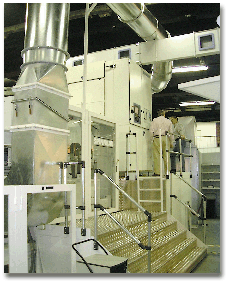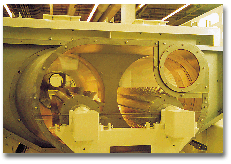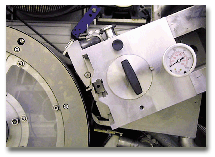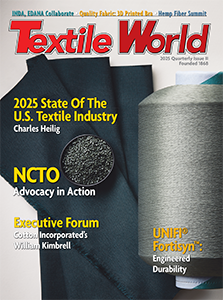The Fiber Society, Clemson, S.C., has named
Dr. Ning Pan
, University of California at Davis, president;
Dr. Gail Eaton
, TRI/Princeton, New Jersey, vice president; and
Dr. Subhash K. Batra
, North Carolina State University, secretary-treasurer, for the year 2001.
WestPoint Stevens Inc., West Point, Ga., has named
M.L. “Chip” Fontenot
president and COO. Fontenot will replace
Tom Ward
, who retired at the end of 2000.
Hans Stahlecker
has been appointed chairman of the Board of Directors of
Spindelfabrik Suessen, Schurr, Stahlecker & Grill GmbH, Suessen,
Germany.
Lawson-Hemphill Inc., Spartanburg, S.C., has named
Daniel Mangle Jr.
to the Rhode Island team as director of business development. Mangle will focus on
developing and promoting new products and technology in the international marketplace.
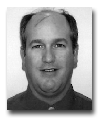
Mangle
J. Michael O’Bryan
and
Karl Sherill
have joined
Boehme Filatex Inc., Reidsville, N.C., as technical sales representatives.
Batson Yarn and Fabrics Machinery Group, Greenville, S.C., has named
Bruce Kalley
director of technical services. In addition,
Max Cochran
will serve as product manager for the company.
Honeywell Performance Fibers, Colonial Heights, Va., has named
Greg Rogowski
general manager, Americas, and
Greg Herceg
Spectra® business director.
James A. Harry
, Grover Industries, Grover, N.C., has been named president of the
North Carolina Manufacturers Association Inc. (NCMA), Raleigh, N.C.
Milton E. Gold
, Amital Spinning Corp., New Bern, N.C., was named first vice president and
William T. McGhee III
, Wiscasset Mills, Kannapolis, N.C., was named second vice president and treasurer.
Richards-Wilcox Inc., Aurora, Ill., has appointed
Leticia DeLaFuente
distribution manager of conveyor systems. DeLaFuente will be responsible for sales and
distribution in North America.
FMC Corp., Chicago, has elected
William G. Walter
executive vice president and a member of the company’s Board of Directors.
Global Chemical Solutions, Dalton, Ga., has named
Marshall “Babe” Rayburn
technical sales specialist. Rayburn will represent the company in South
Carolina.

Rayburn
Paul Lahman
has been appointed senior vice president and chief technology officer for
Jones Apparel Group, Bristol, Pa.
Mike Lollis
has been named vice president and managing director for
EVS US Inc., Charlotte, N.C. In this capacity, Lollis will be responsible for all
EVS operations in the United States, Canada and Mexico.
Sapona Manufacturing Co. Inc., Cedar Falls, N.C., has appointed
Bruce Crumbliss
vice president of sales.
Joe Dana
has been named CEO of
SI Corp., Chickamauga, Ga. Dana replaces
Leonard Chill
, who retired from the company in January 2001.
Optimer Inc., Wilmington, Del., has appointed
Barry Garlick
vice president of marketing and business development for the western United States and
Asia.
Kellwood Co., St. Louis, Mo., has elected
Martin Bloom
, chairman of Massachusetts-based MBI Associates, and
Janice E. Page
, director of Ohio-based R.G. Barry Corp., to its Board of Directors. In addition, the
company has named
W. Lee Capps III
vice president, finance, and CFO.
Mike Debier
, European market manager for metals and glass for Eclipse Inc., Rockford, Ill., has been
named president of the
European Committee of the Industrial Furnace and Heating Equipment Association.
Debier will serve a three-year term as president.
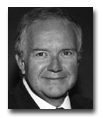
Debier
Switzerland-based
Gretag-Macbeth Holding AG has named
Thomas J. Vacchiano Jr.
president and CEO. Vacchiano will succeed
Ronald G. Anderson
, who will act as advisor to the Board of Directors until his retirement in May 2001.
L. Blaine Boswell
, vice president of public affairs,
PPG Industries, Pittsburgh, will retire in March 2001 after 32 years of service.
In addition,
David E. Sharick
, director of corporate development, and
Aziz S. Giga
, director of strategic planning, have been elected vice presidents of the company.
Haggar Clothing Co., Dallas, has named
Frank Keeney
manager of Haggar Sportswear®. Keeney will be responsible for the growth of Haggar’s shirt
business, which encompasses knits and wovens for the Black Label™, Collections, Generations™ and
Golf sub-brands.
Alba-Waldensian Inc., Valdese, N.C., a division of Tefron Ltd., has appointed
Cheryl Rosenthal
vice president of quality assurance and business development.
February 2001

